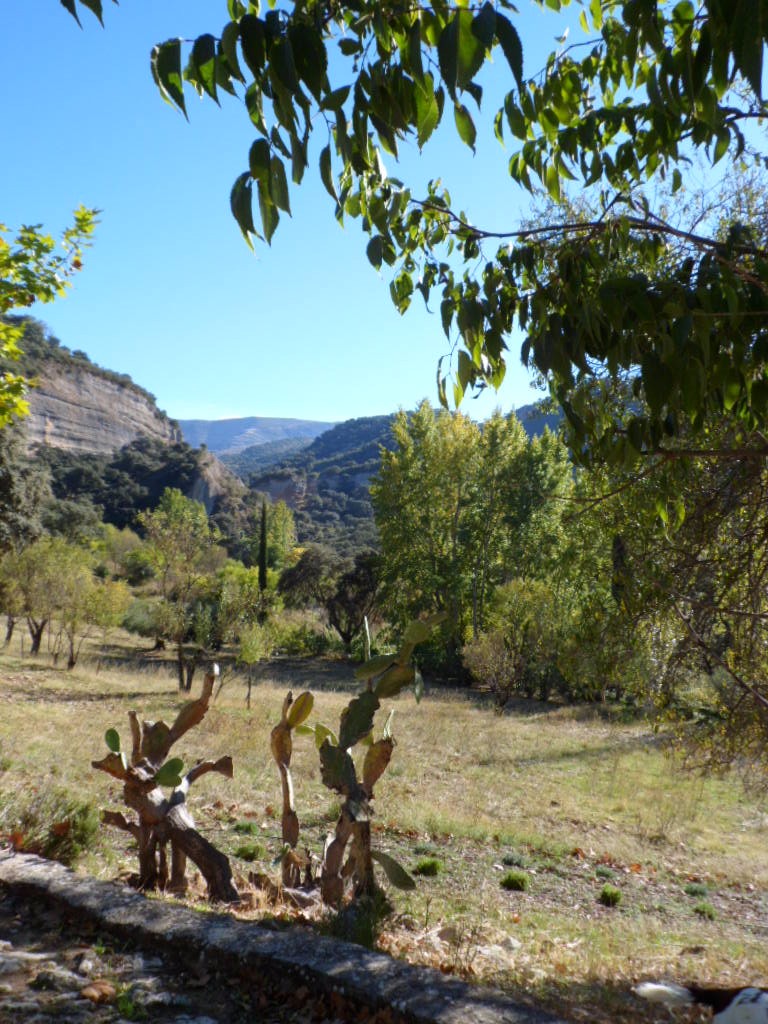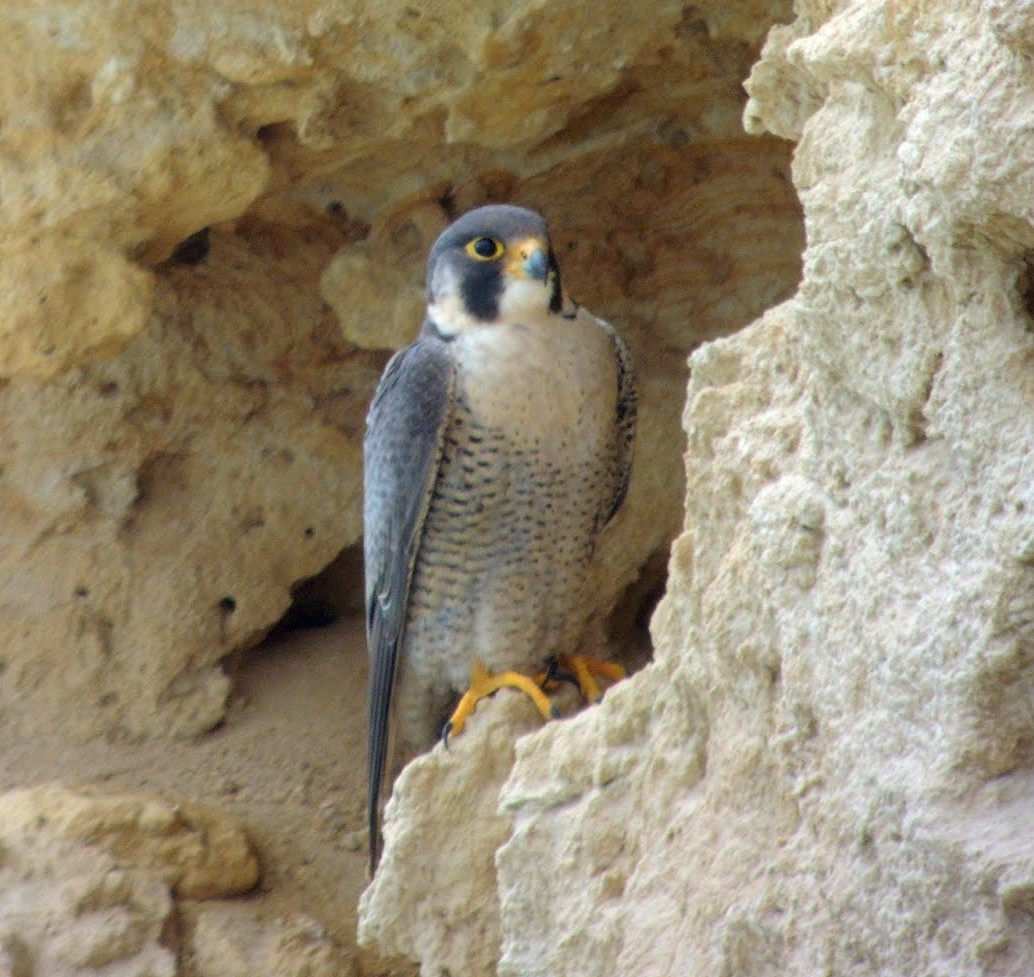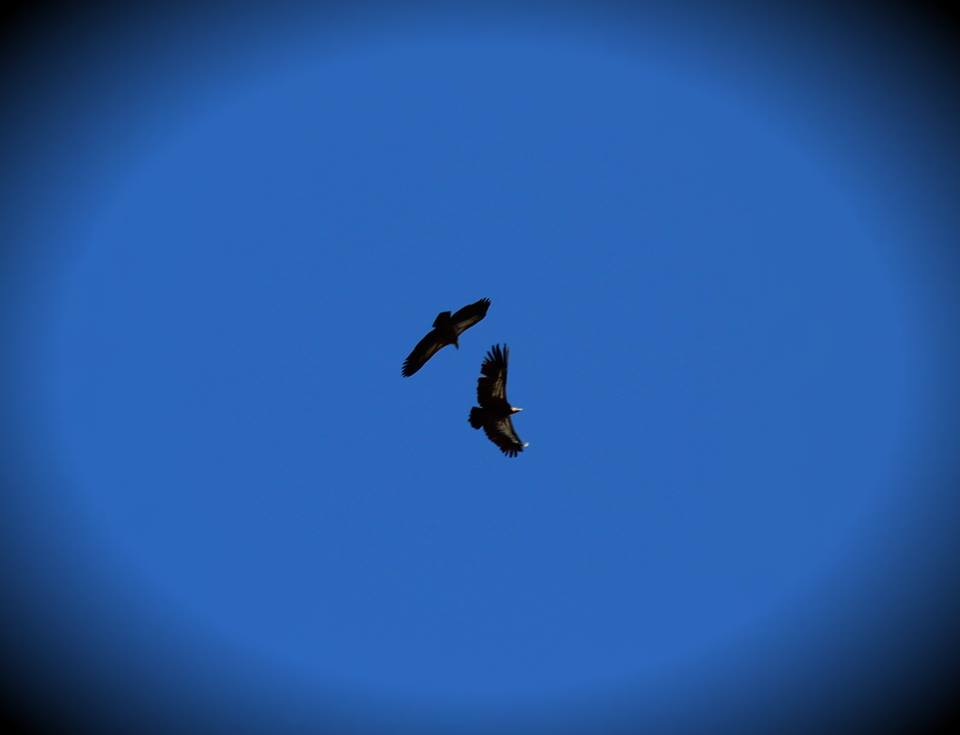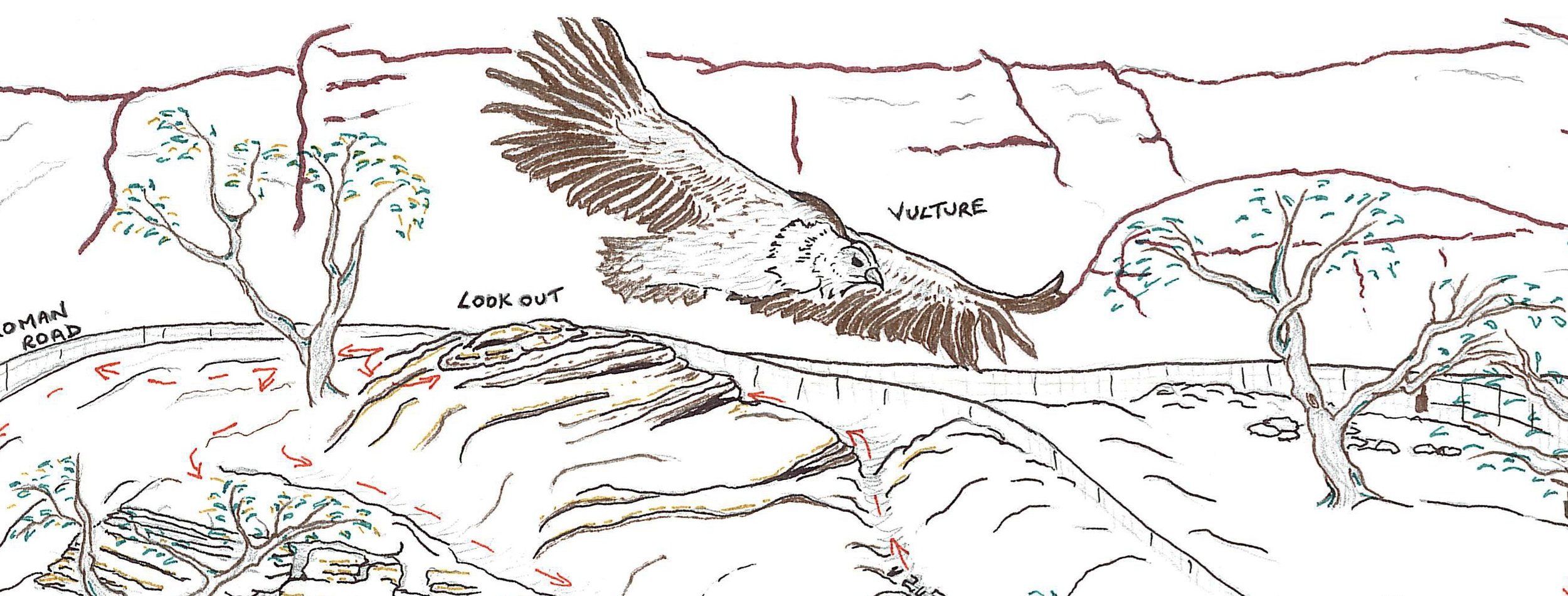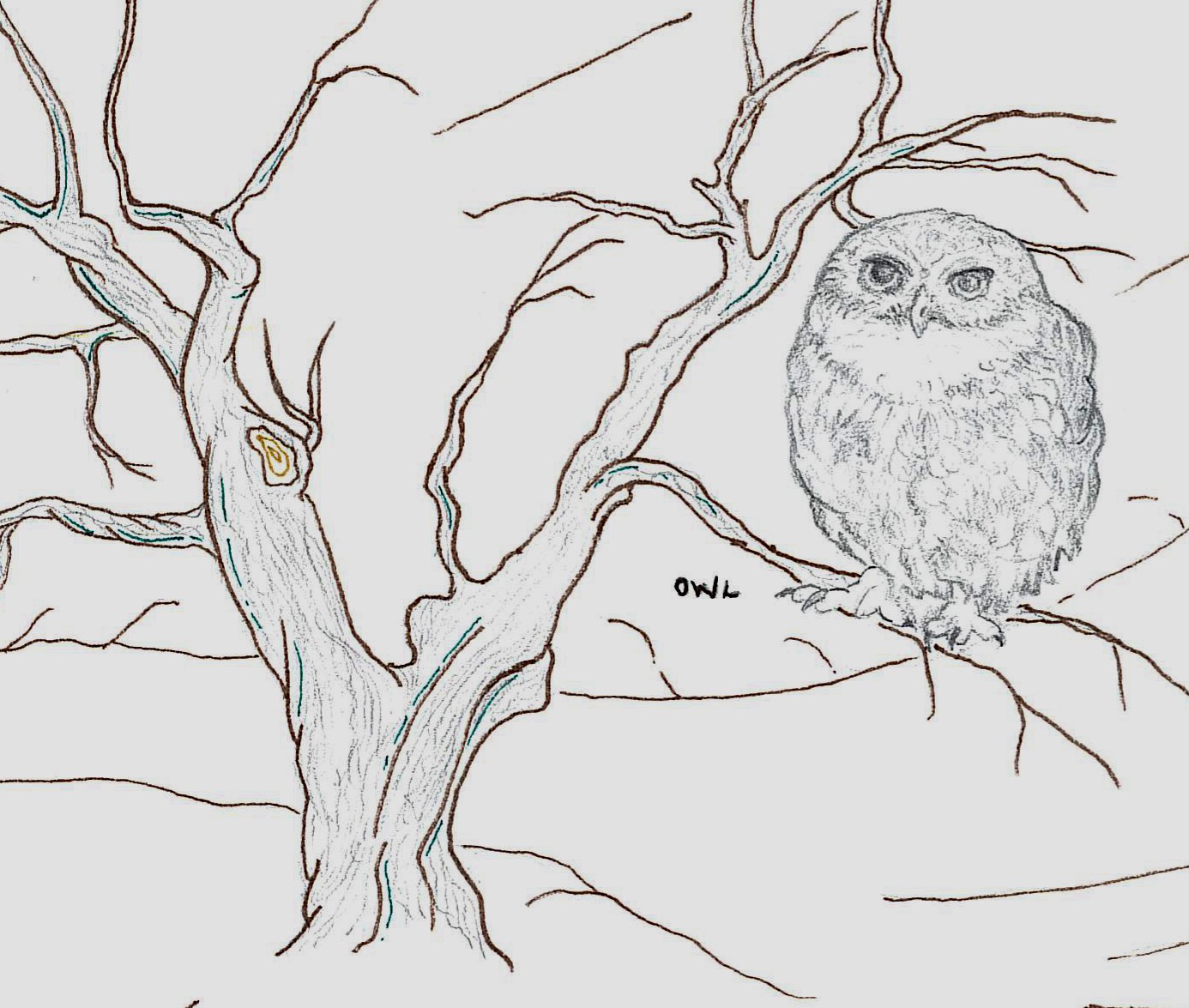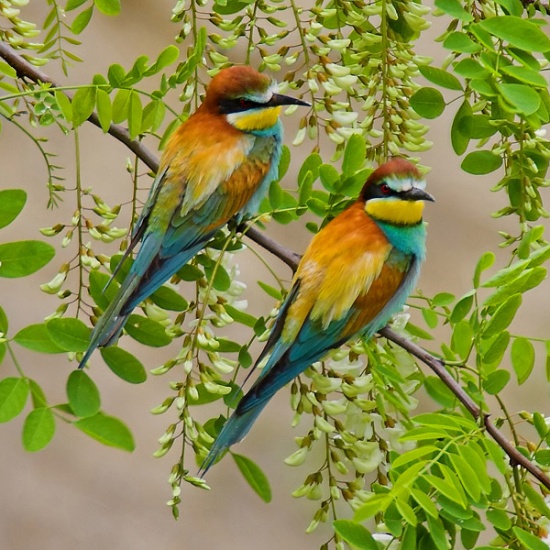Firstly, just to save the time of those that were Googling for something entirely different, we're talking about the feathered kind of bird here.
Still with us? Excellent. As it's the time of year for our feathered friends to build their nests around the property again, and the proliferation of species at La Cazalla is bountiful, we feel the estate is the perfect base for birding. Its secluded valley location, with a stream running through it surrounded by forests and cliffs, provides an optimum habit for a variety of birds and animals. For months we've been wanting to post photographs to get twitchers interested, but the problem is that we are terrible photographers of birds. We do have an artist on the team, so here's our list of ten birds you can enjoying watching from your base at La Cazalla with some sketches (and a couple of borrowed photos):
1. Peregrine Falcons (Falco peregrinus)
In the cliffs opposite the private entrance to La Cazalla is a nesting site for a pair of Peregrine Falcons. They have been using a natural hole in the rock face for many years and for the last couple of weeks we've heard the female calling to demand food from her mate. Last spring the pair produced two chicks and the nest can easily be watched from one of the 'look-outs' at the high end of the estate. Our artist has helpfully produced a map for guests to navigate with.
Peregrine Falcons have long, pointed wings and a long tail, and adults are blue-gray above with barred underparts and a dark head with thick sideburns. They are powerful and fast-flying, hunting medium-sized birds by dropping down on them from high above in a spectacular stoop. Outside of their nesting time, they can often be seen perched within a particular tree at the top of the cliffs, scouting for lower-flying prey. Guests are likely to hear their calls at some point during their stay, which sound like this:
2. Griffon Vultures (Gyps fulvus)
The Griffon Vulture is the most commonly-seen of all the raptors in the Serranía de Ronda and with a wingspan of up to 2.8 metres, they're pretty hard to miss. We usually see them in pairs or small groups, but one Christmas Day our friend Alejandro turned up with a partially decomposed stag's head (what a wonderful gift-giver he is!) and within twenty minutes we had around 30-40 birds circling above the house. Additionally, on the clifftop above the falcons' nest, the vultures are sometimes fed, providing the breathtaking sight of numerous large raptors soaring above and gliding alongside the cliff face. It's simply magical when this happens.
Carrion scavengers by nature, the Griffon Vulture grows up to 1.22 metres and can be identified by their very white head and neck ruff, long broad wings and short tail feathers. The buff-coloured body and base of the wing feathers contrast starkly with the dark flight feathers. Sadly, vultures have been featuring worldwide in the press of late due to the decline in their numbers linked to veterinary use of the drug Diclofenac. In a rather creepy, prehistoric way, they sound like this:
3. Eurasian Wrens (Troglodytes troglodytes)
As an antidote for anyone who now has a case of the shivers, here's a much cuter bird you can easily spot around the estate: the tiny Eurasian Wren.
Despite being a year-round resident at La Cazalla, the best time of year for guests to regularly see the wrens close to the house is during early spring. At this time of year the males build a number of nests and sing to attract mates. A greater number of nests perhaps increases their chances of the female seeing something she likes. Of course, we have delightful birdhouses made from cork dotted all around the grounds, but one particular male prefers to make his nest in an outdoor lampshade on the upper terrace.
Just 9 to 10.5 cm long, the Eurasian Wren is reddish-brown on top, greyer underneath, and is barred with darker brown and grey, even on its wings and tail. The bill is dark brown and the legs are pale brown. Small in stature, the industrious wren has an impressively loud song:
4. Little Owls (Athene noctua)
Weighing in at only 260 grams and measuring 22 cm long, it's not hard to imagine how the Little Owl came to be named. The most likely time to see or hear one at La Cazalla is at dusk, when they are most active, and a good spot to stand vigil (or sit, with a gin and tonic in your hand) is on the lower terrace or by the huge old oak tree next to the parking area.
Apart from being easily identifiable from their size, they have relatively long legs, a short tail, and a rather flat head with no ear-tufts (which, when combined with its prominent white eyebrows, gives it a somewhat judgmental look... better put that gin and tonic down). General colouration is mottled white and dark brown. They feed on insects, and small reptiles, frogs, mammals and other birds. Perhaps not the archetypal 'twit-twoo' you may be expecting, the Little Owl sounds like this:
5. European Bee-eaters (Merops apiaster)
The European Bee-eater has to be the most glamorous bird to visit La Cazalla and the best time to see them is when the wisteria is blossoming on the upper terrace attracting bees, usually during April (and we still have availability for April this year!). They move incredibly quickly (hence no photos of our own), but it's a delight to sit and watch these tiny rainbows flit from nearby trees to the brick wall and back.
European Bee-eaters measure 27-29 cm in length, including the two long central tail feathers, and are richly-coloured. The adult males in breeding plumage have a bright chestnut crown and mantle, pale yellow shoulders and rump, and a green tail and steamers. The under-side of the throat is yellow, bordered by black gorget, and the rest of the underparts is green-blue. Females are slightly greener overall and their colours are a little less-vibrant. Their call is as charming as their colours:
6. Great Spotted Woodpeckers (Dendrocopos major)
These busy birds with their bright red-and-black caps can be seen all over the grounds at La Cazalla, but particularly among the birch trees around the terraces and bouncing between the oaks up by the entrance. True to their name, they can frequently be heard pecking away at the trees in their search for insects to eat. Strangely, they also seem to feel that the entrances to our cork birdhouses are too small or insufficient in number and have customised the houses, even though they seem to have no intention of nesting within them. Well, the name 'Andalucía' does come from the Arabic for 'the Vandals' - we guess they are simply maintaining an old tradition.
20-24 cm in length, they are glossy blue-black on the top with white on the sides of the face and neck. Black lines run from the shoulder to the nape, the base of the bill and about halfway across the breast, and the flight feathers and tail are barred with black and white. The underparts are white other than a scarlet lower belly and undertail. The bill is slate-black, the legs greenish-grey and the eyes are a deep red. Males have a crimson patch on the nape, which is absent from the otherwise similar females. Apart from the obvious rapid drumming noise, they sound like this:
7. Eurasian Golden Orioles (Oriolus oriolus)
Like many of our guests, the Eurasian Golden Oriole is a summer visitor, appearing at La Cazalla in late-April or early-May having spent the winter in Africa. Even with their incredible bright yellow and black plumage, it's surprising how difficult they can be to spot during the summer months when the trees are in full leaf and much easier when they first arrive. However, even for uninformed bird enthusiasts like us, the melodic and unusual song always alerts us to their presence:
8. Eurasian Eagle-Owls (Bubo bubo)
Slightly more difficult to spot unless you're a bit of a night owl yourself (apologies - we couldn't resist that one), you're more likely to discover the remnants of the Eagle-owl's last meal while you wander within the gorge. However, these scatterings of feathers and bone can point the avid birder to the right spot for a nighttime vigil.
This large predator can grow up to 75 cm long with a wingspan of 188 cm (between you and me, that's 6ft 2in - a truly big bird). Eagle-owls have distinctive ear tufts and bright orange eyes, and are a mottled dark-brown/black and tawny colouring. Even if you don't get to see one during your stay, you are very likely to hear them calling at night:
9. Common Nightingales (Luscinia megarhynchos)
Photo credit to John A Thompson
With its plain brown colouration and size not much greater than a robin, it may not be easy to see, but you are certain to hear the Nightingale's powerful and beautiful song during the summer months. This migratory bird usually arrives from Africa in April or May, and although it does sing during the day, it is far clearer during the night and at dawn when other birds are silent.
10. Great Tits (Parus major)
No, this isn't a last-minute addition for those that were searching for something entirely different on Google. And yes, they are a very common type of bird and you probably have them in your back garden, but... we actually have a video of them using our bird houses!!!
As they are so common and are not migratory, you can enjoy the antics of the Great Tits close to the house at any time of year. These distinctive and easily-identified birds have a black head and neck, prominent white cheeks, olive upperparts and yellow underparts.
We have no idea how many eggs were in this nest outside the kitchen, but female Great Tits can lay around 12 eggs and incubate them alone, although both parents are busy all day bringing them food. Again, small birds with great BIG voices, you'll frequently hears these calls during your stay with us:
One of the best locations on the property for watching the birds is by the wood pile below the restored Roman alberca (water reservoir). Birds frequently visit the wood pile to search for insects and drink from the overflow from the alberca. We've recently seen goldfinches, song thrushes and robins flitting around this area, but feel sure expert twitchers could identify a great deal more species here.
The truly avid birdwatcher and photographer may be interested to learn that we are currently converting one of our albercas into an ideal spot for birds to drink and be photographed at, and for this purpose will be erecting a hide next to it. Be sure to subscribe to our blog for news of when the area has been completed so that you can plan your visit accordingly.
Alternatively, if you'd like an expert to guide you through the countryside, spotting and identifying birds along the way, we highly recommend Álvaro and Virginia of Wild Andalucia. As an introduction to bird-watching and an instant way to identify the birds and wildlife that visit us at La Cazalla, Álvaro offers guests staying with us a two-hour tour of the finca - we think it’s the perfect way to connect with the natural beauty of this little piece of paradise.
Whatever the needs of your group, don't hesitate to contact us with your questions about bird life in Andalusia and the time of year you would like to visit. We're always happy to help.
